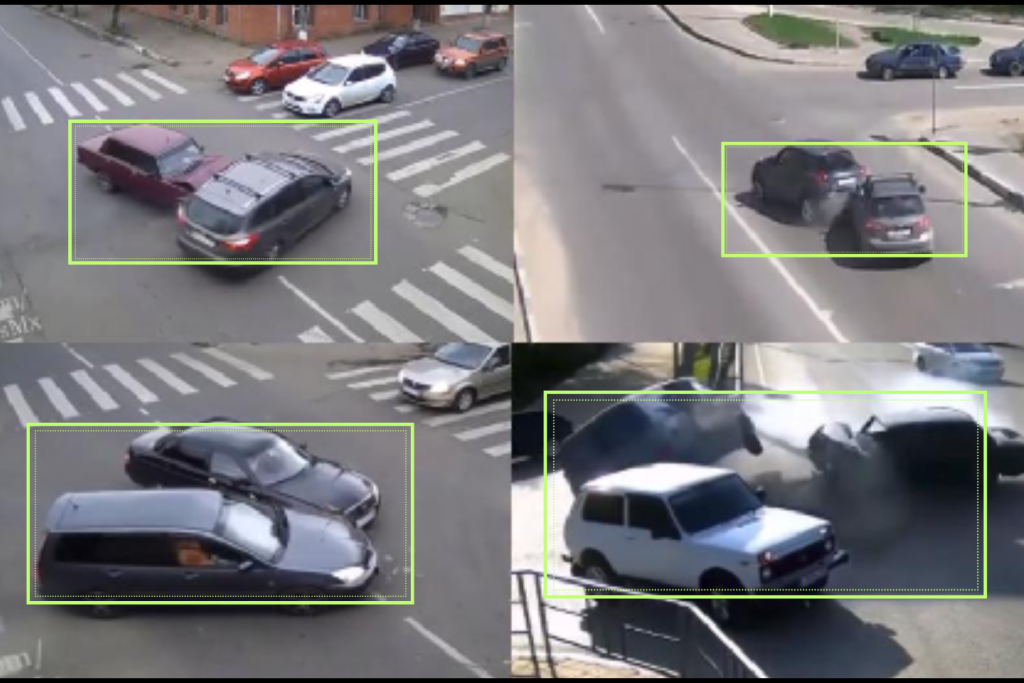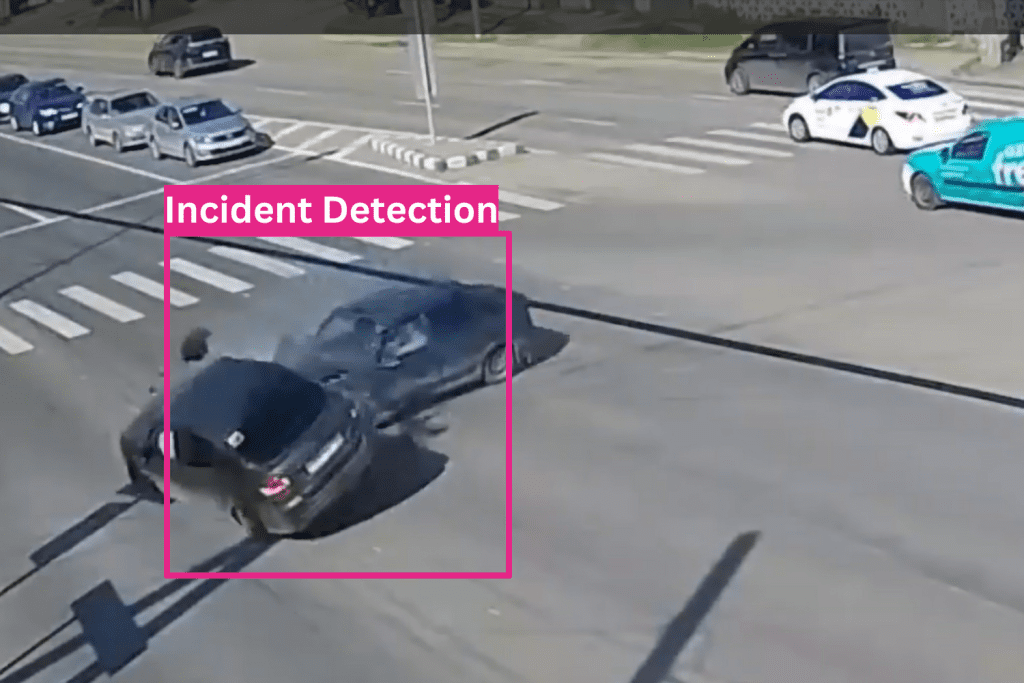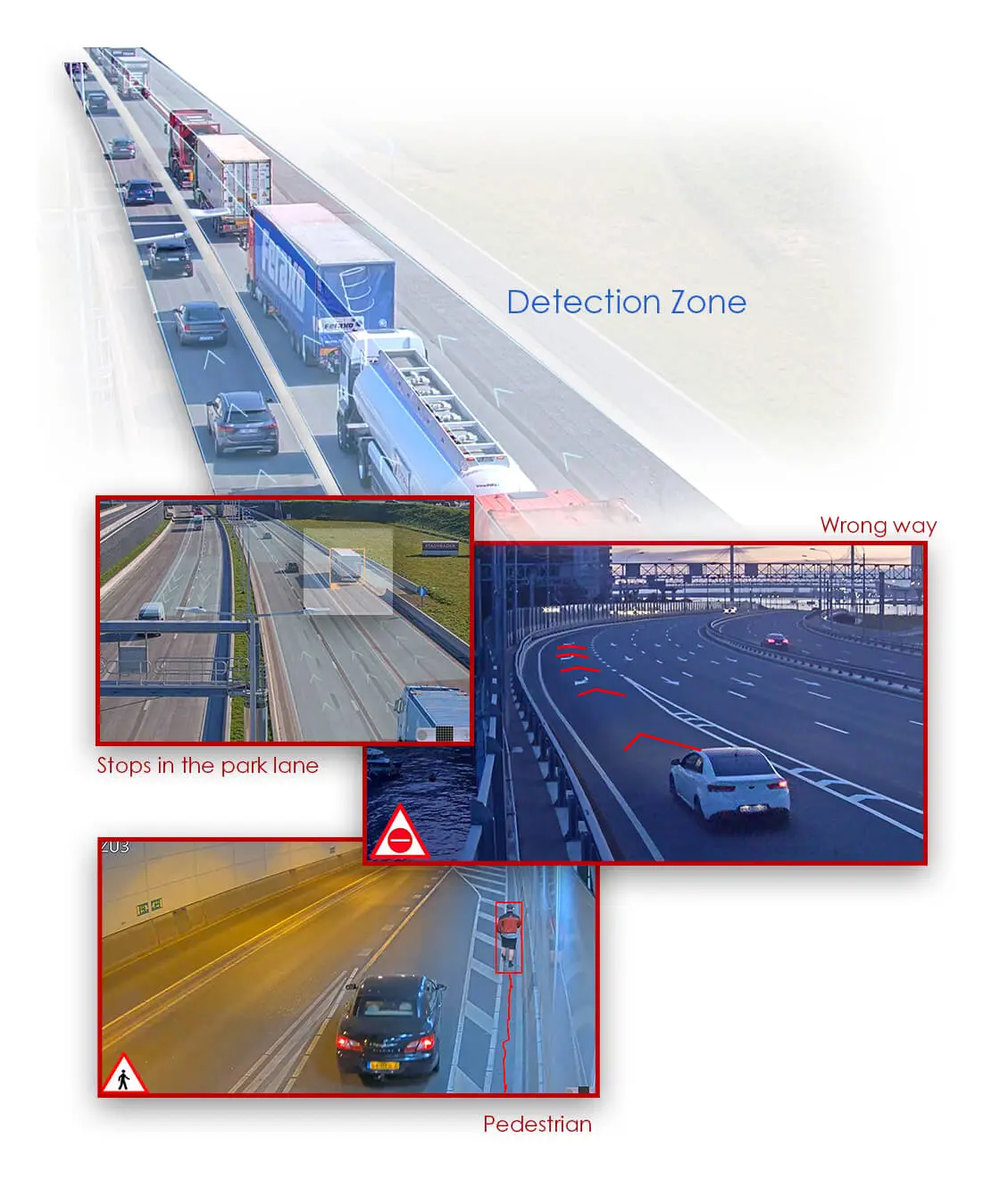Video Incident Detection Systems(VIDS): Benefits and Key Features
In the rapidly evolving traffic management and safety field, Video Incident Detection Systems (VIDS) have emerged as a crucial technology. These systems leverage advanced video analytics to monitor, detect, and respond to various incidents on roadways in real-time. Integrating VIDS into traffic management infrastructures offers significant benefits, enhancing road safety, improving traffic flow, and providing valuable data for future planning. This article delves into the benefits and key features of Video Incident Detection Systems, highlighting their impact on modern transportation networks.
Table of Contents
Understanding Video Incident Detection Systems
Video Incident Detection Systems utilize video cameras placed at strategic locations along roadways and intersections to monitor traffic conditions continuously. These systems employ sophisticated algorithms and machine learning techniques to analyze video footage in real-time, identifying incidents such as accidents, stopped vehicles, congestion, and debris on the road. Once an incident is detected, the system can automatically alert traffic management centers, enabling prompt responses and minimizing the potential for secondary accidents.

Benefits of Video Incident Detection Systems
1. Enhanced Road Safety
One of the most significant benefits of VIDS is enhancing road safety. By providing real-time monitoring and instant incident detection, these systems enable quick response times from emergency services. This rapid response can be critical in preventing secondary accidents and reducing the severity of incidents. For example, if a vehicle stops unexpectedly on a busy highway, the VIDS can immediately notify traffic operators, who can then take action to alert approaching drivers and dispatch assistance.
2. Improved Traffic Flow
VIDS play a crucial role in improving traffic flow by promptly identifying and addressing incidents that could lead to congestion. By detecting incidents such as accidents, stalled vehicles, or debris on the road, these systems allow traffic management centers to implement timely interventions, such as redirecting traffic, adjusting signal timings, or deploying response teams. This proactive approach helps minimize traffic disruptions and ensures a smoother flow of vehicles, ultimately reducing commuter travel times.
3. Data Collection and Analysis
The data collected by VIDS is invaluable for traffic analysis and planning. These systems generate a wealth of information, including traffic volume, vehicle speeds, and incident patterns. Traffic authorities can use this data to identify high-risk areas, understand traffic trends, and develop strategies to enhance road safety and efficiency. Additionally, historical data from VIDS can inform the design and implementation of infrastructure improvements, such as new road layouts or traffic signal optimization.
4. Cost-Effective Solution
Compared to traditional traffic monitoring methods, such as manual surveillance or loop detectors embedded in the pavement, VIDS offer a cost-effective solution. Once installed, these systems require minimal maintenance and can cover large areas with fewer cameras. Additionally, integrating VIDS with existing traffic management infrastructure further reduces costs. The investment in VIDS is often offset by the reduction in incident-related costs, such as emergency response expenses and economic losses due to traffic delays.
5. Environmental Benefits
By improving traffic flow and reducing congestion, VIDS contribute to environmental sustainability. Smoother traffic flow results in less idling and stop-and-go driving, reducing fuel consumption and emissions. Moreover, by quickly clearing incidents and minimizing traffic disruptions, VIDS help decrease the overall environmental impact of road transport.
6. Increased Public Confidence
The presence of advanced traffic management systems, including VIDS, can enhance public confidence in road safety and transportation infrastructure. Knowing that systems are in place to detect and respond to incidents quickly can reassure drivers and encourage more efficient and responsible driving behaviors.

Key Features of Video Incident Detection Systems
1. Real-Time Monitoring and Detection
Real-time monitoring and detection are fundamental features of VIDS. The systems continuously analyze video feeds from cameras placed at various locations, using advanced algorithms to detect incidents as they occur. This real-time capability ensures that traffic management centers are immediately alerted to any issues, allowing for swift responses.
2. Automated Alerts and Notifications
Upon detecting an incident, VIDS can automatically generate alerts and notifications. These alerts can be sent to traffic management centers, emergency services, and even directly to drivers via variable message signs (VMS) or mobile apps. Automated alerts enable rapid coordination and response, minimizing the impact of incidents on traffic flow and safety.
3. Advanced Video Analytics
The core of VIDS technology lies in its advanced video analytics capabilities. These systems use machine learning and artificial intelligence (AI) to accurately identify various types of incidents, such as accidents, stalled vehicles, pedestrians on the roadway, and debris. The algorithms are continually refined and improved, enhancing the system’s accuracy and reliability over time.
4. Integration with Traffic Management Systems
VIDS are designed to integrate seamlessly with existing traffic management systems. This integration allows for coordinated responses to incidents, such as adjusting traffic signal timings, rerouting traffic, and dispatching emergency services. By working in tandem with other traffic management tools, VIDS contribute to a more comprehensive and effective traffic management strategy.
5. Scalability and Flexibility
Scalability and flexibility are important features of VIDS. These systems can be deployed on a small scale, such as a single intersection, or expanded to cover entire cities or regions. The flexible nature of VIDS allows them to be tailored to the specific needs and challenges of different areas, ensuring optimal performance and effectiveness.
6. Data Logging and Reporting
VIDS not only detects and responds to incidents but also logs data for future analysis. This data includes information on traffic volumes, speeds, incident types, and response times. Traffic authorities can generate detailed reports from this data, providing insights into traffic patterns and incident trends. These reports are valuable for evaluating traffic management strategies’ effectiveness and identifying improvement areas.
7. Remote Access and Control
Modern VIDS often come with remote access and control capabilities, allowing traffic operators to monitor and manage the system from any location with an internet connection. This feature is particularly useful for centralized traffic management centers that oversee large geographic areas. Remote access ensures that operators can respond to incidents promptly, even if they are not physically present at the monitoring site.
8. High-Definition Cameras and Image Quality
The effectiveness of VIDS depends significantly on the quality of the video footage. High-definition cameras with excellent image quality are essential for accurate incident detection. These cameras can capture clear images even in challenging conditions, such as low light or adverse weather, ensuring that incidents are reliably detected and monitored.
9. Incident Verification
Before triggering alerts and notifications, VIDS often includes an incident verification step. This step involves confirming the detected incident through additional analysis or human verification to reduce false positives. Incident verification ensures that resources are allocated efficiently and that traffic management responses are appropriate to the situation.
10. Customizable Detection Zones
VIDS allows for customizable detection zones, enabling operators to define specific areas of interest for incident detection. This feature is particularly useful in complex environments, such as intersections or areas with high pedestrian activity. By focusing on critical zones, VIDS can provide more targeted and accurate monitoring.

Future Trends in Video Incident Detection Systems
1. Integration with Autonomous Vehicles
As autonomous vehicles become more prevalent, the integration of VIDS with these vehicles is expected to enhance overall traffic management. VIDS can provide real-time data to autonomous vehicles, enabling them to make more informed decisions and respond to incidents more effectively. This integration will be crucial in creating a seamless and efficient transportation ecosystem.
2. Enhanced AI and Machine Learning
The continued advancement of AI and machine learning technologies will further improve the capabilities of VIDS. Future systems will be able to detect a wider range of incidents with greater accuracy and reliability. Enhanced AI algorithms will also enable predictive analytics, allowing traffic management centers to anticipate and mitigate potential incidents before they occur.
3. Increased Use of Drones
Drones equipped with high-definition cameras and video analytics capabilities can complement traditional VIDS. These drones can provide aerial views of roadways, offering a different perspective for incident detection and monitoring. The use of drones can be particularly useful in areas with limited camera coverage or during large-scale events.
4. Integration with Smart City Infrastructure
VIDS will play a crucial role in the development of smart city infrastructure. By integrating with other smart city technologies, such as connected traffic lights and smart signage, VIDS can contribute to a more efficient and sustainable urban environment. This integration will enable real-time adjustments to traffic management strategies based on current conditions, improving overall mobility and safety.
5. Enhanced Data Analytics and Visualization
Future VIDS will incorporate advanced data analytics and visualization tools, providing traffic management centers with more comprehensive insights into traffic conditions and incident patterns. These tools will enable more effective decision-making and strategy development, further enhancing the benefits of VIDS.
Conclusion
Video Incident Detection Systems represent a significant advancement in traffic management technology. Their ability to provide real-time monitoring, automated incident detection, and data-driven insights offers numerous benefits, including enhanced road safety, improved traffic flow, and cost-effective solutions for traffic management. The key features of VIDS, such as advanced video analytics, seamless integration with traffic management systems, and scalability, make them indispensable tools for modern transportation networks.
As technology continues to evolve, the capabilities of VIDS will only improve, paving the way for more efficient and sustainable traffic management strategies. The successful implementation of VIDS in cities around the world highlights their potential to transform urban mobility and create safer, more efficient roadways for all users. By embracing the benefits and features of Video Incident Detection Systems, cities can take a proactive approach to traffic management, ensuring a safer and more efficient future for their residents.

